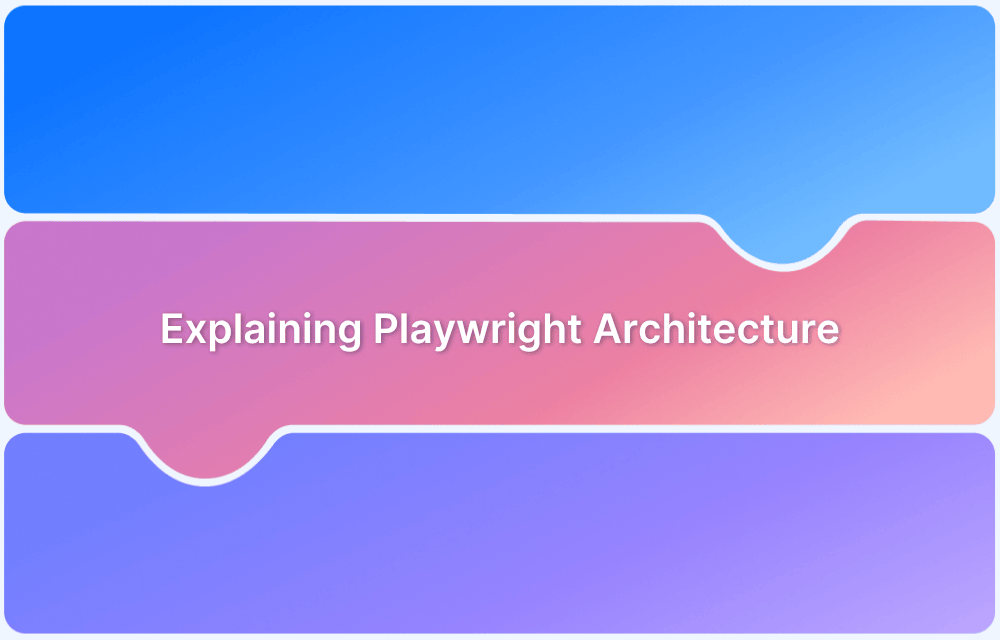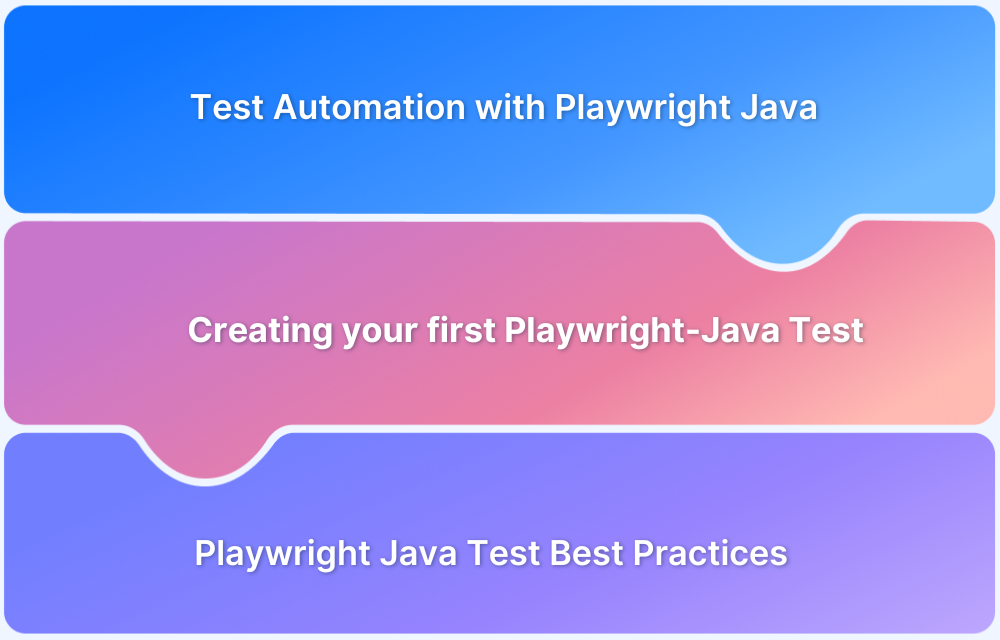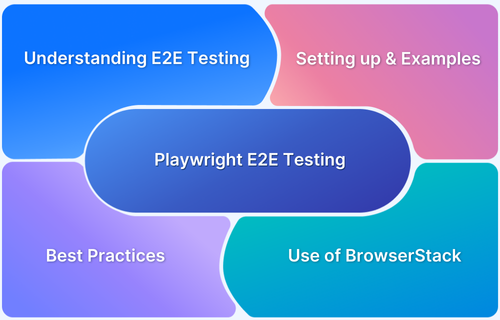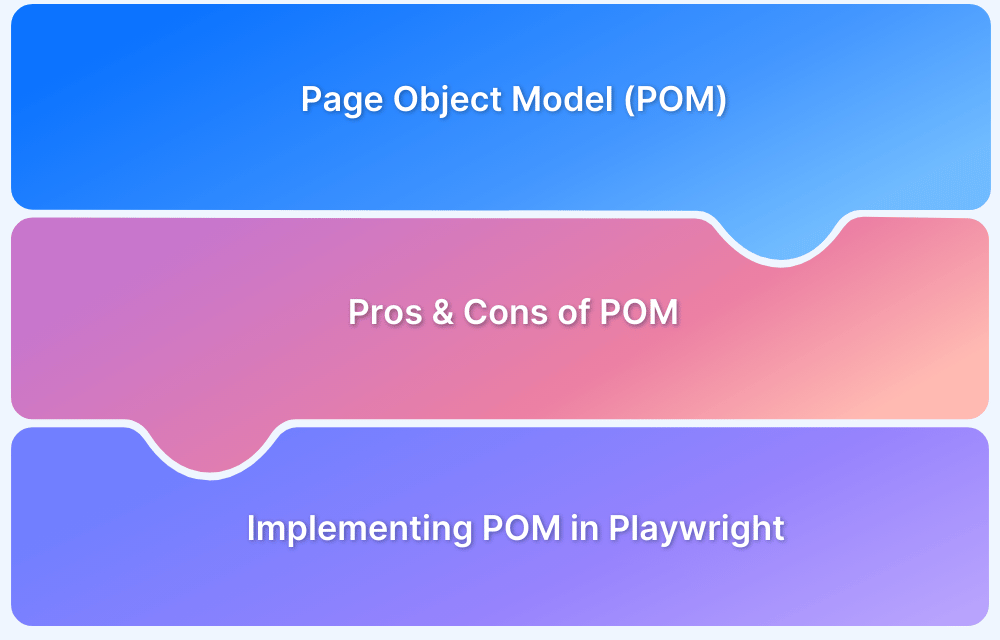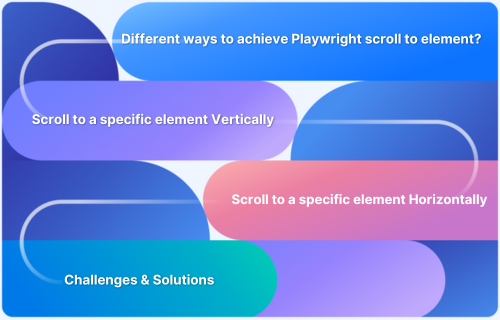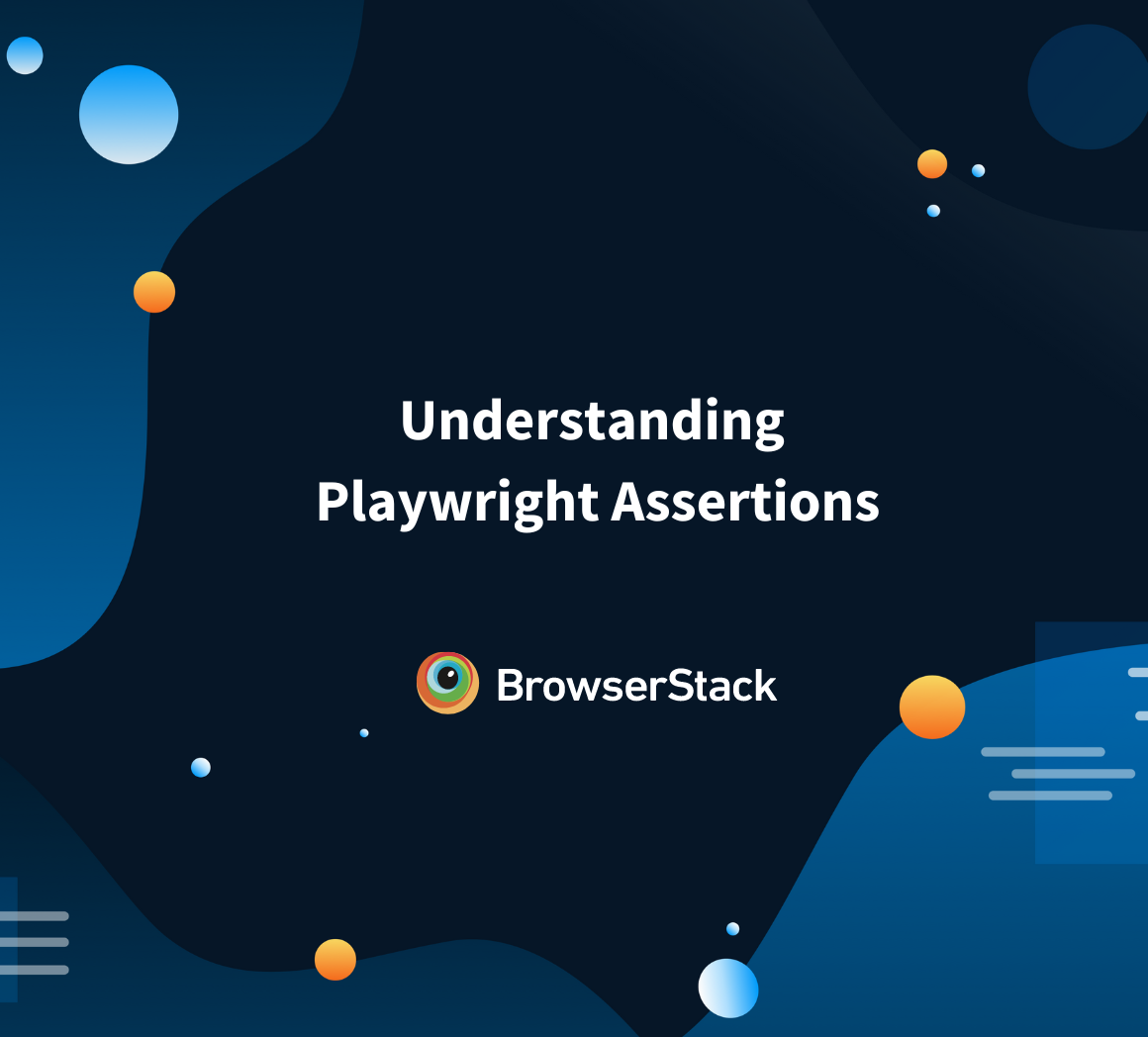Playwright is an open-source automation library that provides modern web app testing capabilities. Known for its speed and versatility, Playwright allows you to automate browsers and simulate real-world user interactions.
Recent surveys and GitHub metrics show Playwright now controls 15% of the automation market and is seeing year-over-year growth of 235% as of 2025.Its robust architecture provides excellent performance and support for multiple languages and browsers.
Core Components of Playwright Architecture
- Client / Language Bindings
- Server / Automation Layer
- WebSocket Communication vs HTTP
- Browser Engines and Contexts
- Multi-language, Multi-platform Support
This article explores Playwright’s architecture, its key components, and how it executes tests efficiently.
What is Playwright?
Playwright is a framework for automating web browsers using code. Developed by Microsoft, it supports multiple programming languages, including JavaScript, TypeScript, Python, and C#. Playwright allows developers and QA engineers to automate complex workflows, interact with web elements, and even test mobile web applications. The framework is built to test websites and web apps across different browsers and devices, offering high reliability and speed.
Key Architectural Principles of Playwright
The core strength of Playwright lies in its architecture. The design is optimized for speed, reliability, and cross-browser support. Playwright’s architecture is based on the following key principles:
- Browser Contexts: Each test is executed in an isolated browser context, ensuring that no data is shared between tests and providing a clean slate for each execution.
- Cross-browser Compatibility: Playwright supports Chromium, Firefox, and WebKit (Safari), making it a versatile tool for testing across all major browsers.
- Automation Layer: Playwright directly communicates with browsers via a WebSocket or HTTP-based server, making it faster and more efficient compared to older methods like Selenium.
Read More: Playwright vs Cypress: A Comparison
Core Components of Playwright Architecture
Understanding the architecture of Playwright is crucial for developers and testers who want to optimize their test scripts.
Client / Language Bindings
Playwright provides language bindings for JavaScript, TypeScript, Python, and C#. These client libraries allow you to write automation scripts in the language of your choice, which makes Playwright a flexible solution for teams with diverse tech stacks.
Server / Automation Layer
The Playwright server acts as the intermediary between the client (your test script) and the browser. The server listens for commands from the client and executes them on the browser, allowing for seamless automation. Playwright’s automation layer is optimized for performance, with minimal overhead in terms of communication.
WebSocket Communication vs HTTP
Playwright uses WebSockets to communicate between the client and server. This offers faster communication and more efficient execution compared to traditional HTTP requests used by other testing frameworks like Selenium. WebSockets allow Playwright to instantly send and receive real-time data, enabling it to handle test scenarios with minimal delays.
Browser Engines and Contexts
Playwright works with three primary browser engines: Chromium, Firefox, and WebKit. Each browser is launched in its own isolated context, ensuring that tests don’t interfere with each other. This approach is key for parallel test execution and accurate results. Contexts allow for simulating multiple users interacting with the same application at the same time, a critical feature for load testing.
Multi-language, Multi-platform Support
Playwright’s architecture is designed to support multiple programming languages and platforms. Whether you are running your tests on macOS, Linux, or Windows, Playwright provides cross-platform compatibility. Furthermore, with the Playwright Python bindings, Python developers can now also leverage Playwright’s power for browser automation.
Read More:Web Scraping with Playwright
Detailed Walk-through: How Playwright Executes a Test
Here’s a breakdown on how Playwright executes a test from start to finish.
Launching the Browser & Browser Context
When you begin a test, Playwright launches a browser instance and creates a new browser context. Each context is isolated from the others, ensuring that no session or data is shared. This allows each test to run independently and reduces the chances of flakiness.
Page Creation and Actions
Once a browser context is created, Playwright will generate pages within that context. You can interact with these pages by performing actions like clicking buttons, entering text in forms, and navigating between pages. Playwright supports rich interaction capabilities, such as simulating drag-and-drop or hover actions.
Network Interception and Events
Playwright provides the ability to intercept network requests during testing. You can use this feature to modify responses, mock API calls, or capture network traffic for analysis. This is particularly useful for testing error scenarios or simulating edge cases in your app’s behavior.
Tracing, Screenshots, Video Capture
To diagnose issues in your tests, Playwright offers built-in tracing and screenshot capabilities. You can capture detailed traces of your tests, including screenshots and video recordings, to help identify where failures occur. This is especially useful in CI/CD environments where you need to debug tests remotely.
Real-world Framework Structure & Folder Layout
As Playwright tests can grow in complexity, it’s important to structure your project properly. A well-organized test suite will make it easier to maintain and scale your testing efforts.
Packages and Modular Architecture
Playwright’s modular architecture allows you to separate different testing utilities into individual packages. For instance, you might have separate modules for test fixtures, helpers, and custom assertions. This makes your test suite easier to maintain and extend over time.
Recommended Project Structure with Playwright
A typical Playwright project might look like this:
/tests /loginThis structure promotes clean code organization and makes it easier for teams to manage tests across different application features.
login.spec.js
/checkout
checkout.spec.js
/helpers
apiHelper.js
/fixtures
userFixture.js
Performance, Parallelism & Scalability in Playwright
Playwright was designed with performance and scalability in mind. It can execute tests in parallel, allowing you to run large test suites quickly.
Browser Context Isolation
Since each test is run in an isolated context, Playwright ensures that no data or session is shared across tests. This makes it easy to scale testing efforts, especially when testing multiple user flows simultaneously.
Parallel Execution & Sharding
Playwright supports parallel test execution, allowing you to run tests across multiple processes or machines. This is particularly important when dealing with large test suites or when aiming to speed up the feedback loop in CI/CD pipelines.
Handling Large Test Suites
When you scale Playwright tests, it’s important to keep performance in mind. Playwright handles multiple tests in parallel by sharding them across different processes, minimizing the time it takes to complete the entire test suite.
Why Test Playwright Tests on Real Devices?
While testing on desktop browsers is essential, testing on real devices is critical for simulating real-world user experiences. Devices often have different network conditions, browser behaviors, and unique issues that might not appear in the desktop version.
The Need for Real-World Testing
Real devices are subject to unique constraints such as lower processing power, different screen sizes, touch interactions, and network variability. Testing on real devices ensures that your web application functions correctly under real user conditions.
Handling Device-Specific Behaviors
Mobile browsers often behave differently than desktop browsers. Testing on real devices ensures that these nuances are captured early in the development cycle. Features like screen resolution, pinch-to-zoom, and geolocation can vary greatly depending on the device.
Why choose BrowserStack Automate to run Playwright Tests?
To fully understand how your Playwright tests will perform across a range of real-world devices, use BrowserStack Automate.
It offers real device cloud testing, enabling you to run Playwright tests on real smartphones, tablets, and desktops without the need to maintain your own device farm. With BrowserStack Automate, you can ensure that your web applications behave as expected on the devices your users actually use.
Here’s why BrowserStack Automate is an excellent choice for running Playwright tests:
- Real Device Testing: With BrowserStack Automate, you can run your Playwright scripts on a wide array of real devices, ensuring comprehensive testing across various operating systems, screen sizes, and resolutions.
- Parallel Test Execution: BrowserStack supports running Playwright tests in parallel across different devices and browsers, increasing testing efficiency and speeding up feedback cycles.
- Seamless CI/CD Integration: Easily integrate BrowserStack with popular CI/CD pipelines like Jenkins, CircleCI, and GitHub Actions, enabling faster feedback and improved software quality.
- No Device Maintenance or Additional Costs: By leveraging BrowserStack’s cloud infrastructure, you eliminate the need to manage a physical device lab, saving on both maintenance and associated costs.
Best Practices & Common Pitfalls in Playwright Architecture
Even though Playwright’s architecture is efficient, developers often face challenges when writing and maintaining tests. Here are some best practices to avoid common pitfalls:
- Use Browser Contexts Wisely: Always isolate tests in their own contexts to ensure there is no data leakage.
- Avoid Flaky Tests: Use Playwright’s retry mechanisms and ensure your tests are robust by handling dynamic content correctly.
- Leverage Parallel Testing: Run tests in parallel to reduce the overall test execution time.
Conclusion
Playwright offers a modern, scalable solution for web application automation. Its robust architecture provides excellent performance and support for multiple languages and browsers.
However, to truly understand how your application behaves in real-world conditions, it’s essential to test on real devices. BrowserStack Automate allows you to test Playwright scripts across a range of real devices and browsers, ensuring your application works seamlessly across all platforms.
